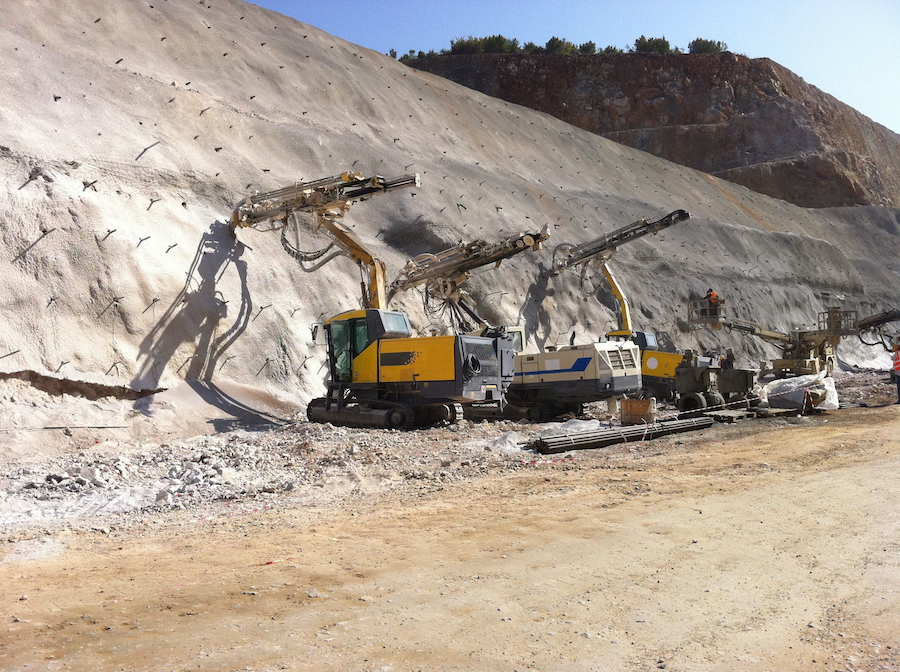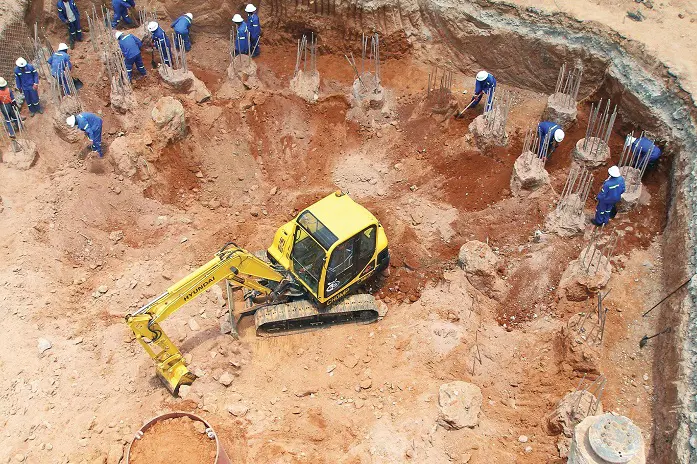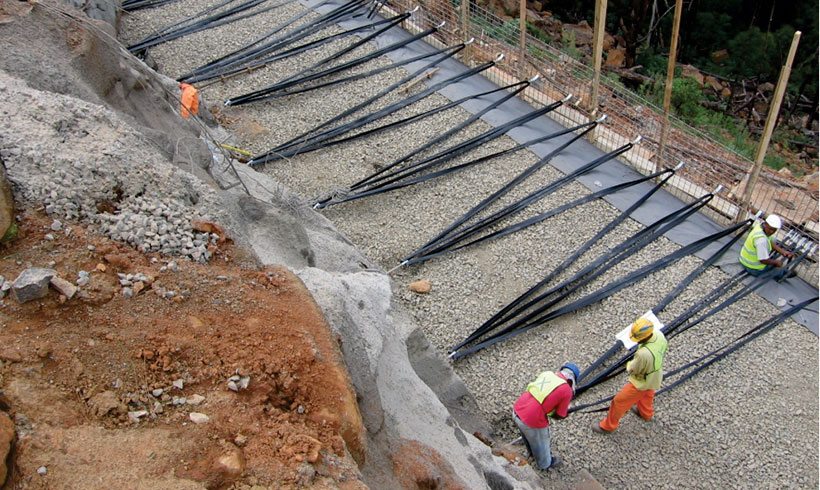Leading Geotechnical Companies in South Africa: Who You Must Know
Wiki Article
A Comprehensive Overview of Geotechnical Engineering Techniques and Their Influence on Modern Civil Engineering Projects
Geotechnical engineering serves as the foundation of modern civil engineering, providing essential methods that resolve the complexities of subsurface problems. The interplay of soil evaluation, foundation layout, and innovative technologies shapes the honesty and sustainability of facilities projects.Significance of Geotechnical Engineering
Geotechnical engineering functions as an important structure for civil engineering jobs, affecting the safety and security of frameworks. This discipline focuses on the actions of soil and rock materials, providing important understandings that guide the layout and building and construction procedures. By comprehending the communication between the earth and engineered frameworks, geotechnical engineers can evaluate threats linked with ground conditions, such as settlement, incline stability, and liquefaction.The importance of geotechnical engineering extends beyond plain structural integrity; it plays an essential function in environmental management and sustainability. Correctly implemented geotechnical analyses guarantee that projects minimize their ecological footprint and conform with governing demands (geotechnical engineer description). Additionally, geotechnical design is important in site option, enabling designers to recognize ideal places for construction that mitigate potential hazards.
Additionally, geotechnical engineering fosters development in civil engineering by progressing techniques for ground improvement, structure style, and excavation. The technique's payments are important in attending to difficulties presented by differing dirt problems, therefore helping with effective and safe framework growth. Generally, the importance of geotechnical engineering is extremely important in ensuring that civil design projects are not only viable but likewise durable against synthetic and natural difficulties.
Key Strategies in Geotechnical Engineering

One more vital method is soil stabilization, which entails changing dirt buildings to improve load-bearing capability or decrease settlement. Approaches such as adding concrete, lime, or utilizing geosynthetics are frequently used to accomplish dirt improvement.
Ground improvement techniques, including dynamic compaction and vibro-replacement, are additionally essential. These approaches aim to densify loose or soft dirts, improving their strength and decreasing liquefaction potential in seismic locations.
Preserving structures, such as sheet piles and dirt nailing, are used to sustain excavations and avoid soil activity. Moreover, slope stabilization strategies, including drainage systems and maintaining walls, are necessary for reducing landslide risks.

Soil Evaluation and Testing Methods
Efficient soil evaluation and testing methods are crucial for recognizing the chemical and physical homes of soil, which directly affect engineering choices. A comprehensive assessment of soil features is essential for forecasting actions under different loading conditions and ecological influences.Common soil testing approaches include both field and laboratory methods. Field tests, such as the Requirement Infiltration Examination (SPT) and Cone Infiltration Examination (CPT), provide prompt insights into soil density, stamina, and stratification. These tests aid designers examine site conditions efficiently prior to even more comprehensive laboratory evaluations.
Lab screening techniques, such as Atterberg limits, grain dimension distribution, and compaction tests, are essential for identifying dirt plasticity, dampness material, and optimum compaction levels. In addition, advanced strategies like triaxial examinations and combined undrained (CU) tests use valuable information on shear strength and effective stress criteria - geotechnical engineer description.
Chemical screening, consisting of pH, electrical conductivity, and organic material evaluation, is also essential for comprehending prospective soil contamination and its effect on building and construction materials. Collectively, these dirt evaluation and screening approaches form the structure of notified decision-making in geotechnical engineering, guaranteeing the security and security of modern civil design tasks.
Structure Design Approaches
These approaches can be categorized right into deep and shallow foundations, each suited to certain dirt problems and loading circumstances. Superficial structures, such as spread footings and floor covering foundations, are typically used when surface area soils have adequate bearing capability.In contrast, deep structures, consisting of piles Website and pierced shafts, are employed when surface area soils are poor or weak for supporting the framework. These foundations transfer lots to deeper, much more secure soil or rock layers, making them important for skyscrapers and bridges in challenging geotechnical problems.
Choosing the ideal foundation style involves extensive geotechnical examinations, including dirt composition, bearing capacity, and groundwater conditions. Engineers must consider aspects such as negotiation, lateral lots, and potential seismic activity to make certain the foundation's performance over time.
Ultimately, a well-executed structure style is a pivotal facet of civil engineering, straight influencing the safety and security, resilience, and capability of structures. geotechnical engineer description. By lining up foundation types with site-specific conditions, engineers can efficiently alleviate dangers connected with structure failing
Innovations Shaping Civil Engineering

Lasting products, such as high-performance concrete and recycled aggregates, are likewise obtaining traction, promoting environment-friendly techniques while maintaining structural stability. Furthermore, progressed geotechnical strategies, such as ground renovation and deep mixing methods, are enhancing the security of structures in difficult dirt problems.
Moreover, making use of drones and remote noticing innovation is boosting website checking and evaluating, providing real-time data that aids in handling construction progress and security. The implementation of innovative construction methods, such as modular and premade building and construction, further expedites task timelines and lowers waste. Collectively, these advancements are not just transforming civil engineering techniques but also guaranteeing that modern infrastructure fulfills the needs of a growing worldwide populace while addressing ecological issues.
Final Thought
In verdict, geotechnical design techniques are important to the success of modern-day civil engineering tasks. The application of website investigation, soil stablizing, and ground improvement methodologies makes certain the security and stability of framework. Technologies such as Structure Info Modeling (BIM) and advanced tracking technologies better improve task performance and precision. By employing these techniques, designers can alleviate dangers and add to the development of durable urban atmospheres, ultimately cultivating lasting growth and security in civil engineering methods.Geotechnical design serves as the foundation of modern civil engineering, supplying vital strategies that address the complexities of subsurface problems.Geotechnical design serves as an important structure for civil engineering jobs, affecting the safety and security and security of structures.In addition, geotechnical design cultivates development in civil engineering by progressing methods for ground improvement, foundation style, and excavation. On the whole, the significance of geotechnical engineering is extremely important in making sure find here that civil design tasks are not just viable but likewise resistant versus man-made and natural difficulties.
In conclusion, geotechnical engineering techniques are essential to the success of contemporary civil engineering projects.
Report this wiki page